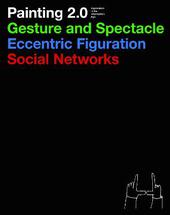
|
Painting 2.0: Expression In the Information Age
Hardback
Main Details
Description
Examining the resurgent interest in painting and the proliferation of new digital media in recent years, this generously illustrated book delineates painting's complex relationship with information technology. In a survey that begins in the mid-twentieth century, long before the birth of the Internet, this book traces painting's capacity to digest and transform other media, even as its own legitimacy has been questioned. Featuring the work of numerous renowned artists, from Sigmar Polke to Nicole Eisenman and from Cy Twombly to Amy Sillman, the book examines how painting has addressed digital technology as it relates to human experience and perception, and includes three in-depth essays and additional texts by influential thinkers from the field. Comprehensive and lavishly illustrated, the book presents a wide range of works that reconsider the assumed opposition of the digital and the analog, the human and the technological, arguing that painting has served as a means to represent--and even enact--new media. This book affirms the ongoing vitality of the medium of painting in the midst of a digital world. 350 colour illustrations
Author Biography
Achim Hochdorfer is Director of the Brandhorst Collection.
Reviews"This book (and the show that accompanied it, which first opened at Munich's Museum Brandhorst in 2016) set out with the broad goal of "revis[ing] the history of painting since 1960." Shockingly, for a legacy so deeply chronicled, it succeeded. Painting 2.0 effectively resuscitated a medium that had long risked "marginalization," as art historian David Joselit put it in an interview with ARTnews, and it presaged a wave of figurative painting that would come out of Europe and America in the years since." -Artnews
|